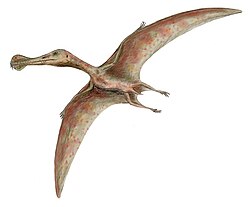| Kem Kem Group | |
|---|---|
| Stratigraphic range: Cenomanian [1] ~ | |
 | |
| Type | Geological group |
| Sub-units | Douira Formation, Gara Sbaa Formation |
| Underlies | Cenomanian-Turonian limestone platform (Akrabou Formation) |
| Lithology | |
| Primary | Sandstone |
| Location | |
| Coordinates | 32°50′N4°50′W / 32.833°N 4.833°W |
| Approximate paleocoordinates | 18°48′N4°06′W / 18.8°N 4.1°W |
| Region | Er Rachidia, Tafilalt |
| Country | Morocco |
| Extent | central and eastern Morocco north and south of the Pre-African Trough |
The Kem Kem Group (commonly known as the Kem Kem beds) [1] is a geological group in the Kem Kem region of eastern Morocco, whose strata date back to the Cenomanian stage of the Late Cretaceous. Its strata are subdivided into two geological formations, with the lower Ifezouane Formation and the upper Aoufous Formation used for the strata on the eastern side of the Atlas Mountains (Tinghir), with the Gara Sbaa Formation and Douira Formation used in the southern Tafilalt region. [2] It is exposed on an escarpment along the Algeria–Morocco border.
Contents
- Vertebrate paleofauna
- Cartilaginous fish
- Ray-finned fish
- Lobe-finned fish
- Amphibians
- Lizards and snakes
- Plesiosaurs
- Turtles
- Crocodylomorphs
- Dinosaurs
- Pterosaurs
- See also
- References
The unit unconformably overlies Paleozoic marine units of Cambrian, Silurian and Devonian ages and is itself capped by limestone platform rock of Cenomanian-Turonian age. It primarily consists of freshwater and estuarine deltaic deposits. The lower Gara Sbaa Formation primarily consists of fine and medium grained sandstone, while the Douira Formation consists of fining-upward, coarse-to-fine grained sandstones intercalated with siltstones, variegated mudstones, and occasional thin gypsiferous evaporites. [1]
Dinosaur remains are among the fossils that have been recovered from the group. [3] Recent fossil evidence in the form of isolated large abelisaurid bones and comparisons with other similarly aged deposits elsewhere in Africa indicates that the fauna of the Kem Kem Group (specifically in regard to the numerous predatory theropod dinosaurs) may have been mixed together due to the harsh and changing geology of the region, when in reality they would likely have preferred separate habitats and likely would have been separated by millions of years. [4]
Although preserving a freshwater habitat located near a river delta (with some estuarine influence that increased over time as the sea level rose), the Kem Kem deposits were quickly submerged by the sea during the Cenomanian-Turonian boundary event, and are thus overlaid by the marine deposits of the younger latest Cenomanian and early-mid Turonian-aged Akrabou Formation, which was formerly also considered a member of the Kem Kem Group, but has been differentiated from it in more recent studies due to their differing paleoenvironments. [1] [5]




















